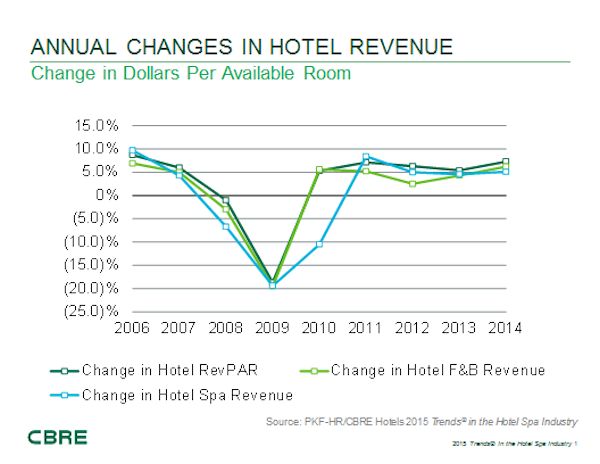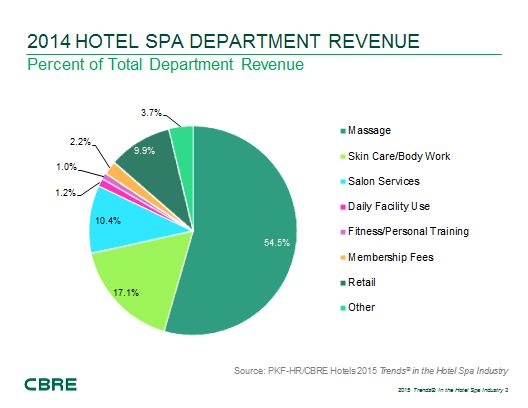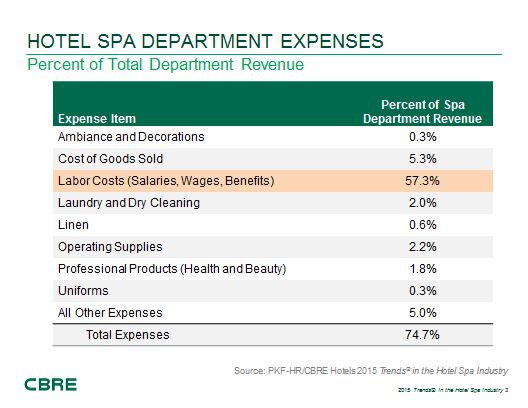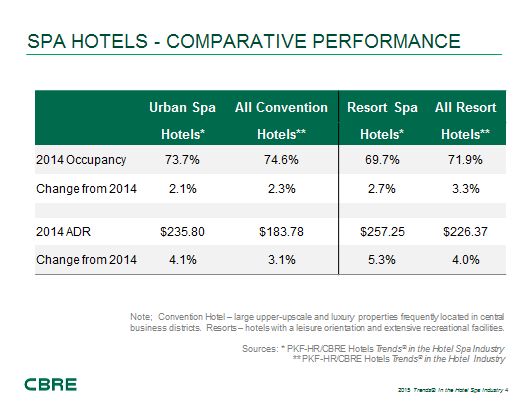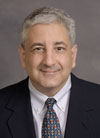By Robert Mandelbaum and Andrea Foster
Coming out of the great recession, U.S. hotel operators struggled to earn revenue from sources other than the rental of guest rooms. However, in 2014, we began to see guests spend their money in other areas of the hotel. According to the 2015 edition of Trends® in the Hotel Industry, rooms revenue increased by 7.3 percent in 2014. Concurrently, revenue within the food and beverage and other-operated departments grew by 6.2 percent.
One example of an other-operated department enjoying growth is the hotel spa. In 2014 hotel spa revenues increased by 5.1 percent, while department profits grew 10.5 percent. To evaluate how hotel spas achieved their gains in revenue and profits we analyzed the results of our firm’s 2015 Trends® in the Hotel Spa Industry report.
Revenue
Spa revenues increased by 5.1 percent for the overall survey sample, but we did observe differences based on property type. Spas operated within urban hotel properties enjoyed a stronger 7.0 percent gain in revenue. This is consistent with the strong performance of the primary urban markets, and the return of group demand. Lagging somewhat were resort hotel spas. These properties saw their spa revenues increase by 4.4 percent.
Massage services continue generate the most revenue for hotel spas. In 2014, massage revenue comprised 54.5 percent of total spa department revenue, followed by sales from skin care/body work (17.1%), salon services (10.4%), and retail operations (9.9%). Revenues from these major sources all increased in the 4.0 to 5.0 percent range from 2013 to 2014.
Leading in revenue growth on a percentage basis were the fees generated from selling memberships to local patrons. Revenues from local residents and members contribute 59 percent of the revenue earned by urban hotel spas. Resort hotels, on the other hand, earn the majority (62%) of their revenue from hotel guests.
Only two sources of spa revenue suffered declines in 2014. They were daily use fees and health and wellness services. Given the rise in hotel occupancy levels, it appears that spa managers needed to limit the opportunities for local patrons to use their facilities on a one-off basis. It should be noted that only a small percentage (3%) of properties reported revenue from health and wellness.
Expenses
The cost of operating a hotel spa increased by 3.4 percent from 2013 to 2014. Consistent with the Uniform System of Accounts for the Lodging Industry, spa department expenses consist solely of direct costs such as labor, cost of goods sold, and other operating supplies. Not included are unallocated expenses for administration, marketing, maintenance, and utilities.
Labor costs are the greatest expense within hotel spa departments comprising 57.3 percent of total department revenue. This includes the cost of spa therapists and technicians who are both direct hotel employees and independent contractors. Other major expenses are the cost of goods sold in spa retail operations (5.3%), operating supplies (2.2%), and laundry and dry cleaning (2.0%).
From 2013 to 2014, labor costs increased by 2.9 percent. The cost of goods sold grew by 5.3 percent, but unfortunately retail sales increased by just 4.1 percent. All other department expenses were limited to just a 0.6 percent increase.
Profits
With revenues growing greater than expenses in 2014, hotel spa departments posted a healthy 10.5 percent increase in department profits. Benefiting from the stronger gains in revenue, urban spas enjoyed a 13.1 percent boost on the bottom-line, which is greater than the 9.8 percent profit gain achieved by resort hotel spas.
Spa department profits margins averaged 25.4 percent for the overall sample. Resort hotels (28.1%) were more efficient than urban hotels (18.4%) in converting spa revenues to profits. Higher wages rates in the nation’s major cities contribute to a greater labor cost burden at urban hotel spas.
The Halo Effect
Hotel spas may truly be a minor operated department. In the hotels that manage their own spas, spa department revenue accounted for just 3.9 percent of total hotel revenue in 2014. However, there is anecdotal evidence that the benefit of having a hotel spa can go beyond dollars and cents.
The presence of a spa helps solidify properties as luxury and upper-upscale hotels. Comparing the performance of spa properties with comparable hotels in our Trends® database we find that the spa hotel sample had a higher ADR in 2014, and was able to increase their room rates to a greater degree.
Operating a spa also enhances the attraction of the hotel to certain demand segments. Although it may not be used by all conventioneers, the presence of an on-site spa and associated fitness facilities is a must for most meeting planners. Further, a spa helps position the property as a healthy hotel with all the associated menus and amenities. More and more travelers want to maintain their healthy lifestyle while on the road.
A Healthy Future
Favorable economic and demographic trends foretell a very bright future for hotel spas. Occupancy rates at the upper-priced lodging segments in which most hotel spas operate are forecast to achieve all-time record levels 2015 through 2017. Increased guest counts, combined with a growing desire for healthy experiences while traveling, should result in a continuation of solid gains in spa department revenues and profits.


